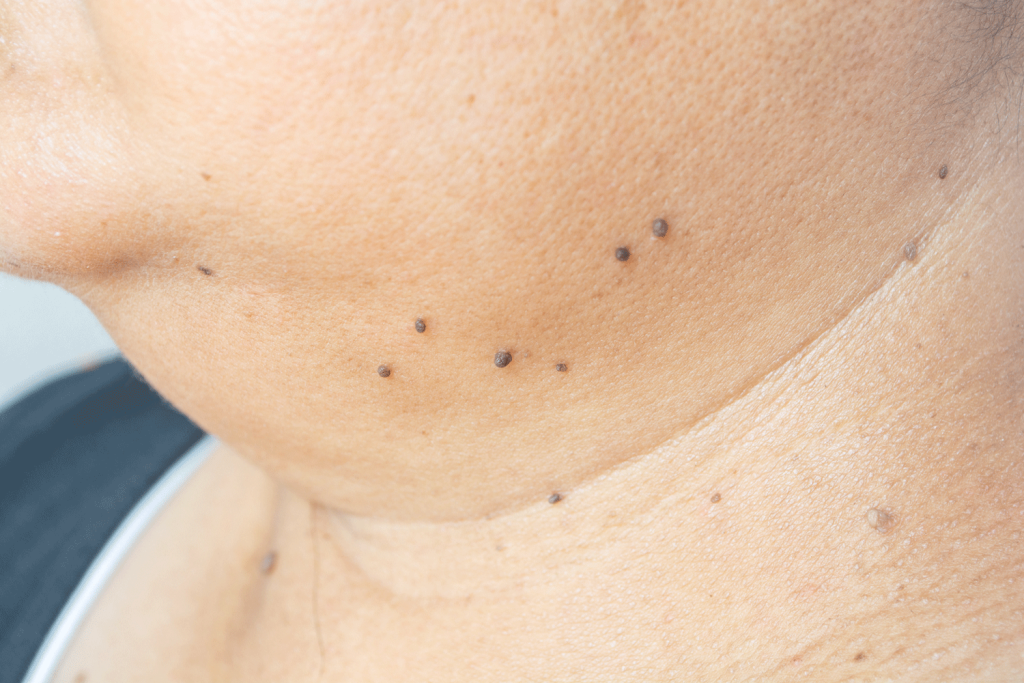What is a wart?
A wart is a small, rough growth on the skin that is caused by a viral infection. The viruses that cause warts belong to the human papillomavirus (HPV) family. Warts can appear on any part of the body but are most commonly found on the hands, feet, and genitals.
Types of Wart
There are many different types of warts based on their appearance and location, however, they are all triggered by HPV:
Common Warts
Typically found on the hands and fingers, these warts have a rough, grainy appearance and a rounded top.
Filiform Warts
These raised warts have frond or finger-like projections from their surface
Flat/Plane wart
These are smaller and smoother than other types, and they often appear in large numbers. They can occur anywhere but are commonly found on the face, neck, hands, wrists, and knees.
Plantar wart (also known as Verruca)
These warts occur on the soles of the feet. They can be painful and are often flat due to the pressure from walking.
Genital Warts
Found on the genital and anal areas, these warts can be sexually transmitted and may have a cauliflower-like or skin-tag appearance, some being brown and others pink or skin coloured. Genital warts can be subtle and patients only experience itch but warts are identified during examination at the clinic.
How do I contract the wart virus?
The human papillomavirus (HPV), which causes warts, is highly contagious and can be transmitted in several ways.
Here are the primary ways people can get infected with HPV:
Skin-to-Skin Contact
Touching a wart on another person's body can transfer the virus. Common in settings where people have close physical contact, such as sports or intimate relationships.
Contaminated Surfaces
Contaminated Surfaces: HPV can survive on surfaces for a period of time. Common places include shared towels, gym equipment, public showers, and swimming pools. Objects Sharing personal items like razors, towels, or shoes can transfer the virus.
Self-Inoculation
Spreading the Virus to Different Parts of Your Body: Touching a wart on one part of the body and then touching another part can spread the virus. Shaving over a wart can cause it to spread to other areas. Picking at warts can transfer it to other body areas or encourage growth under your nail
Weakened Immune System
Reduced Immune Response: People with weakened immune systems (e.g., those with HIV/AIDS, on immunosuppressive drugs, or undergoing chemotherapy) are more susceptible to HPV infections.
Sexual Contact
Genital Warts: Spread through sexual contact with an infected person. Can occur during vaginal, anal, or oral sex.
Micro-Abrasions
Small Cuts or Abrasions: The virus can enter the body through tiny cuts or abrasions in the skin. This is why warts often occur on hands and feet, which are more likely to have small cuts or scrapes.
Treatment Options
Treatments available at Cathedral Dermatology

Medical Procedures
Cryotherapy using Hydrozid®:
- Freezes the wart.
- Usually requires multiple treatments.
Surgery – Curettage:
- Curettage involves cutting off the wart with a sharp instrument.
Topical Therapy
Imiquimod:
- Cream that stimulates the immune system to fight the virus.
- Often used for genital warts.
